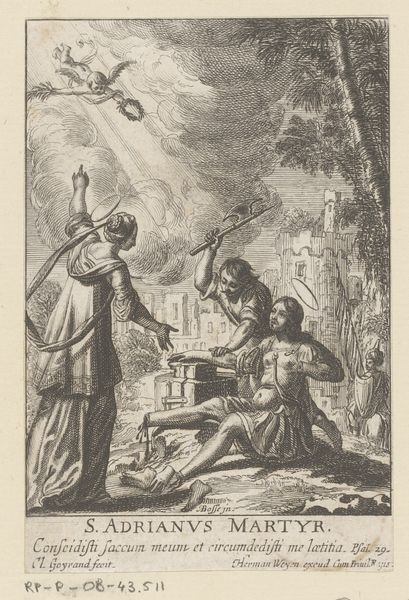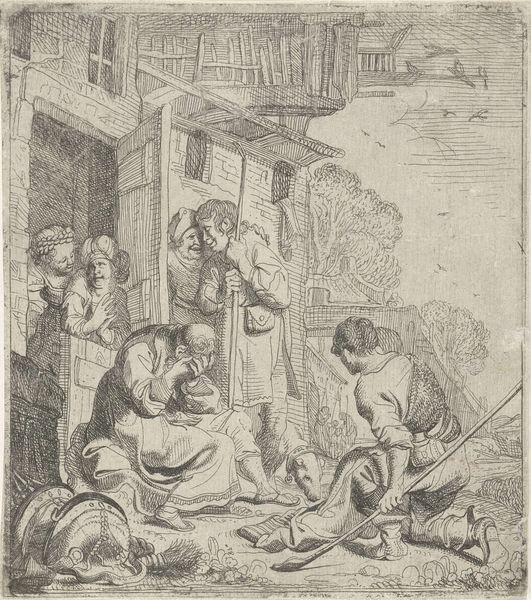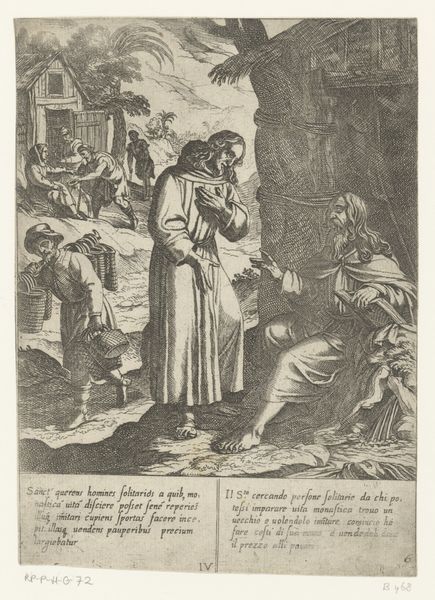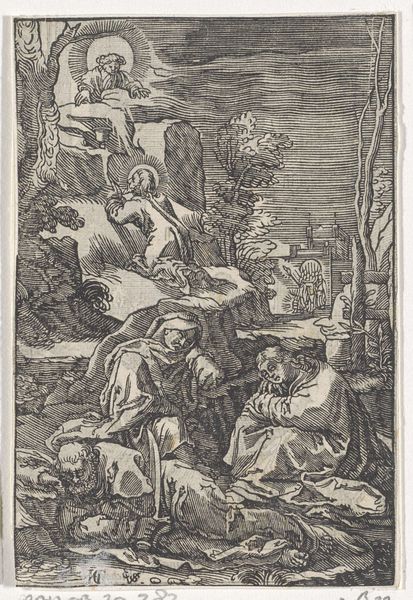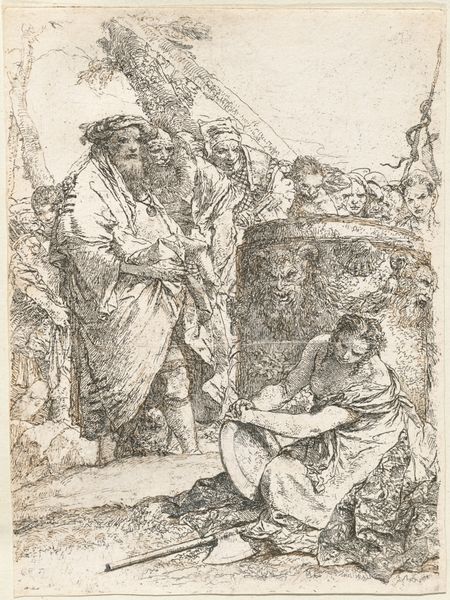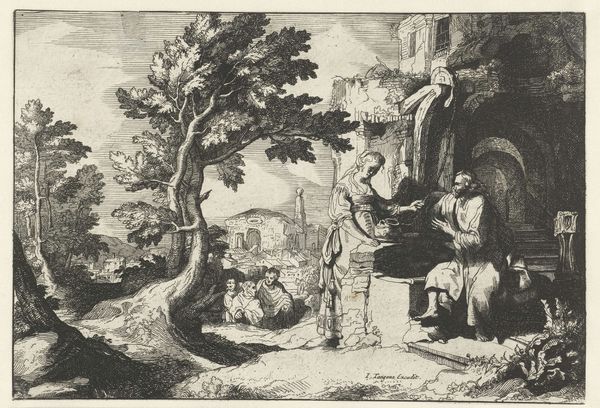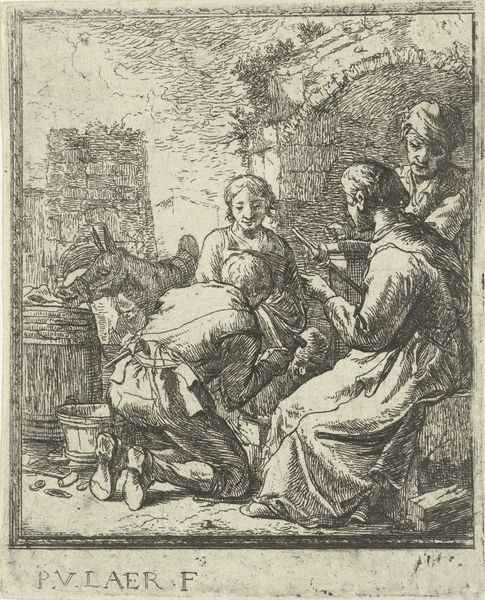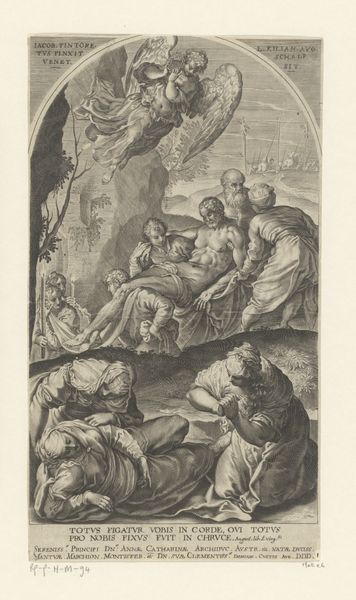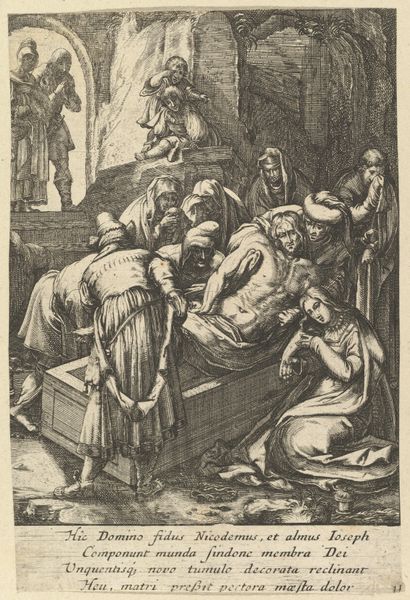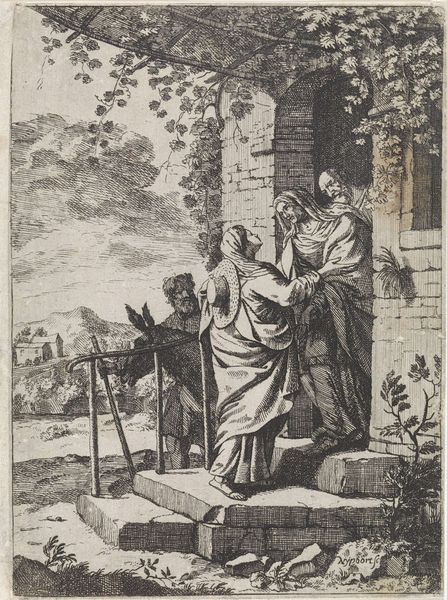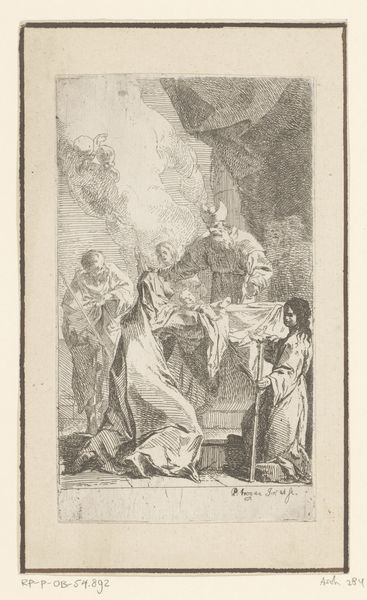
drawing, print, ink, engraving
#
drawing
#
baroque
#
pen drawing
# print
#
ink
#
history-painting
#
engraving
#
christ
Dimensions: height 122 mm, width 101 mm
Copyright: Rijks Museum: Open Domain
This print, ‘Christ and the woman of Samaria among ruins,’ was made with etching, a printmaking process using acid to create lines in a metal plate. The anonymous artist likely covered the plate with a wax-like coating, then scratched away lines to expose the metal. After immersing the plate in acid, the drawn lines are eaten away to create recessed lines. Ink is applied to the plate, and then the surface is wiped clean, leaving ink only in the etched lines. The plate is then pressed onto paper, transferring the image. The technique allows for detailed and intricate lines, which can be seen in the textures of the architectural ruins, and clothing of the figures. It’s a process that allows for the reproduction of images, reflecting the growing demand for accessible art during the early modern period. The print serves as a testament to the skillful labor of the artist and printer, who have transformed simple materials into a visually captivating and spiritually evocative image.
Comments
No comments
Be the first to comment and join the conversation on the ultimate creative platform.

